Who wants a slice, Cuba’s Havana for sale
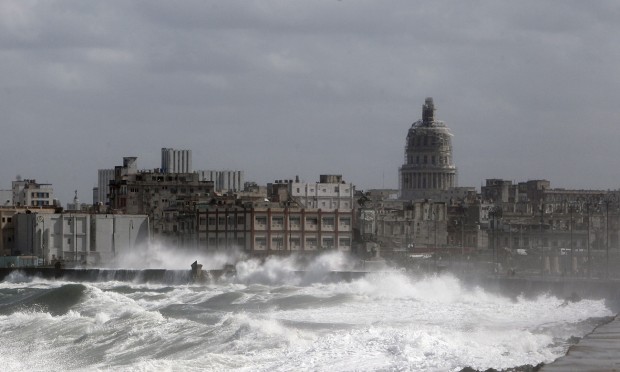
The Guardian
In central Havana’s Parque Fe del Valle, at the end of a street bustling with the usual scenes of queues for the bakery and clapped-out 1950s cars weaving between piles of rubble, is a glimpse of a very different Cuba. Every bench, wall, dustbin and plant pot in this tree-lined square is occupied by bodies hunched over laptops and gathered around smartphones, as people swipe at tablets and gesticulate at their screens.
Three generations of one family are huddled around a phone, the children fighting over who gets to wear the headphones while the granny holds a baby up to the camera – so that relatives in Miami, who they haven’t seen for years, can inspect the family’s new arrival. Nearby, two brothers scroll through Facebook to check the latest enquiries for their bed-and-breakfast business, their laptop balanced on a makeshift desk of crates, while a gaggle of teenage girls stream music and practise dance moves under a tree.
This lively scene, which looks like an impromptu secondhand technology fair, is the result of a new phenomenon in Cuba: Wi-Fi hotspots. In a country where the internet is still forbidden in private homes and an hour checking emails at an internet cafe can cost nearly a week’s wages, the arrival of five designated Wi-Fi zones in Havana has been nothing short of revolutionary.
Walk along La Rampa by night, the long people-watching road that slopes up from the seafront into the neighbourhood of Vedado, and you’ll see huddles of ghostly faces, illuminated only by the glow of screens. These sprawling open-air internet lounges have also spawned a new informal economy. Wi-Fi touts wander the streets like drug-pushers, re-selling the state telecom company’s prepaid $2 scratch-off cards for $3 apiece, muttering “cards, cards?” instead of the usual “hashish? girls?”. Snack stalls and drinks stands – private enterprises that would have been forbidden five years ago – have sprung up to fuel the spontaneous street-corner parties, where people gather around to watch the latest Hollywood trailers on YouTube.
“We are seeing a whole new quality of public space,” says Miguel Antonio Padrón Lotti, a Cuban professor of urban planning, who worked at the country’s National Physical Planning Institute for 45 years. “Cubans have always socialised on the streets, but now we can interact with the wider the world at the same time.”
The wider world is arriving here in ever bigger droves, and not just through the internet. On the cobbled streets of Habana Vieja, the beautifully restored old town, it can now be hard to move for the throngs of package tour groups. They follow their flag-toting guides between cafe-lined squares, shuffling from the Museo del Chocolate, past living statues and outposts of Victorinox and Diesel, to boutique shops housed in majestic old mansions where handmade watches are on sale for $12,000.
Not long ago, all this was crumbling. The improbable transformation is the work of the Office of the City Historian, a vast state department of architects and planners headed up by Eusebio Leal Spengler since 1981. Wielding unheard-of power for an architectural historian, equivalent to that of a mayor, he has won plaudits from Unesco and heritage bodies around the world for what he’s achieved here over the last 30 years, against all the odds.
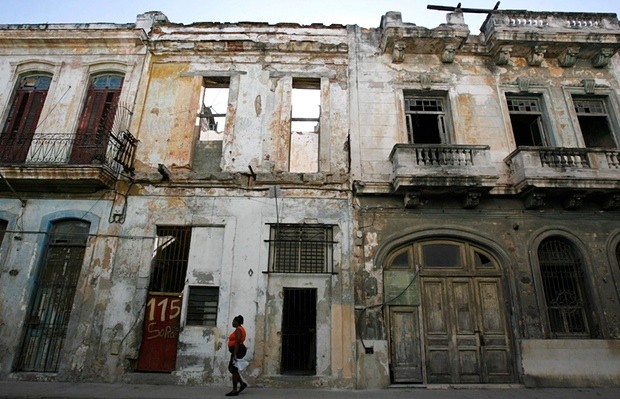
In the early 1990s, Leal persuaded Fidel Castro to set up a state-owned tourism enterprise, Habaguanex: a company charged with developing hotels, restaurants and shops. Crucially, it would plough the profits back into restoring Havana’s derelict buildings and streets, as well as seeding social projects and community facilities. It was a canny model of capitalist tactics deployed for socialist ends, which has seen Leal’s office channel more than half a billion dollars into the old town. The company now presides over a growing empire of 20 hotels, 40 restaurants and 50 bars and cafés, as well as dozens of high-end boutiques.
But outside the tourist circuit of the four main plazas and the carefully repaved pedestrian routes that wind between them, two-thirds of the old town remains in a perilous state. Castro’s revolution was fundamentally anti-urban, focusing on restructuring the rural economy at the expense of the colonial capital, and the consequences are all too visible. Look beyond the newly polished stage-set facades, and you’ll still find families living several generations to a room in buildings that threaten to collapse around them at any minute.
Although half of the profits of Habaguanex are ploughed into social initiatives – including health clinics, schools, libraries and old people’s centres – the renovations have come at a price, exaggerating the divisions between the scrubbed-up and the squalid. Many former residents of these grand historic buildings have been rehoused far away from the centre, in the hated suburbs of Alamar and Habana del Este across the bay to the east. More look set to be displaced as the pressure to accommodate foreign visitors only continues to rise.
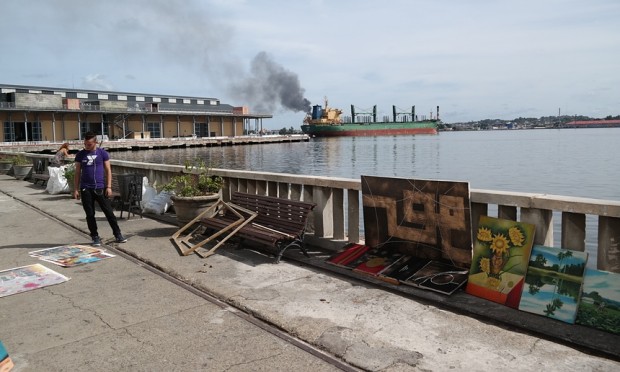
One local cafe owner, who used to live in an historic building in the old town with 20 other families, now has to travel two hours a day to get into work, since his former home was renovated. But he has mixed feelings about the consequences. “The tourists might be pushing us further away,” he says, “but they’re also bringing in money that the city desperately needs. And our building was about to fall down anyway.”
As part of the growing restaurant industry, he benefits from being paid in the currency that foreigners have to use on the island – the convertible peso, or CUC – which, pegged to the US dollar, is 25 times more valuable than the local currency, the Cuban peso (CUP). It is a gulf that has effectively created two classes of citizen in this supposed land of equals: those with access to hard currency, and those without. “Life is better if you work for the tourists” is how one rickshaw driver puts it – as two middle-aged Americans struggle to get out of his fibreglass cabin, adding a generous tip on to the already over-priced fare.
Nothing is going to happen very quickly, for the simple reason that it takes so long to get anything done
More than 3 million tourists came to Cuba last year, boosted by a sharp increase in the number of US visitors, which has surged by almost 40% since Obama ushered in a thaw in diplomatic relations at the end of 2014. American citizens are officially still forbidden to travel here for the sole purpose of tourism, but the sanctioned categories of travelling to “support the Cuban people” and for “people-to-people activities” are vague enough to allow tour operators to thrive. American cruise-ship giant Carnival is already planning to bring “culturally themed” cruises here from May, making it the first such cruise company to visit Cuba since the 1960 trade embargo. According to the IMF, an end to the embargo could see as many as 10 million US tourists a year – a deluge for which the creaking, crumbling bones of Havana are far from prepared.
“The infrastructure just isn’t there to cope with such numbers,” says Belmont Freeman, a Cuban-American architect based in New York, who has made frequent trips to Havana over the last 15 years. “The city is woefully underserved for hotels and even if more were built, the services couldn’t supply them. The mains water system hasn’t been improved since the 1920s – it still loses around 50% through leakage.”
Not that this seems to be standing much in the way of the luxury hotel developers, who have their sights set on opportunities across the city. On the eastern side of Parque Central, just visible through a cloud of construction dust from nearby roadworks, stands the stately frontage of the Manzana de Gomez building, a classical pile that occupies an entire city-block, built as Cuba’s first shopping mall in 1910. Now entirely stripped out, it stands as an eery windowless shell, awaiting the opulent filling of a five-star Kempinski hotel planned to open later this year.

Around the corner, the Hotel Packard is being similarly spruced up and expanded by Spanish starchitect Rafael Moneo for Iberostar. Further north, near the package beach resort of Varadero, British property developer London & Regional has unveiled plans for The Carbonera Club,a $500m luxury development of 1,000 Conran-designed residences arranged around an 18-hole golf course. Taking advantage of a recent relaxation of regulations, it will allow foreigners to own beachfront property on the island for the first time. US chains such as Marriott and Hilton can do nothing but stand drooling from just 100 miles across the Straits of Florida, waiting for the embargo drop.
One insider describes some foreign developers’ proposals for the harbour as ‘Las Vegas meets Miami in the Caribbean’
“I give it two years, max,” says Freeman. “It will be US business interests that finally push congress into lifting the embargo – they’re all going crazy being shut out of this market.” American architects and developers are already queuing up to be first in line, ready to pounce on investment opportunities when the embargo drops. Frank Gehry sailed into Havana in December, aboard a streamlined yacht he designed for himself, here to “offer his expertise to Cuba” according to a government statement.
“You know that Cuba is at the centre of attention of many people,” Gehry told the gathered crowd. “And in the immediate future it will attract many investors – particularly the tourism sector. But I am sure that you know to be careful with those projects.”
Jorge Pérez, a Cuban-American condo tycoon based in Miami, paid a visit to Havana for its art biennale last year. “I wish they would let me be the developer for all of this,” he told Miami newspaper el Nuevo Herald on his return. “I think I could change Havana in 10 or 20 years. If they opened things up and I could build a luxury condominium in Vedado, I would sell them in two hours here in Miami.”
It is the kind of prospect that worries Miguel Padrón, who is not sure that Havana is ready to cope with what developers are preparing to throw at it. “We will have many divas and divos arriving with their very nice drawings,” he says. “But as a society, we desperately need to improve our capacity to debate and discuss these plans. The challenge is how to capture the potential of the market in the right way, to learn how to negotiate with foreign investors. Havana is now the big cake – and everyone is trying to get a slice.”
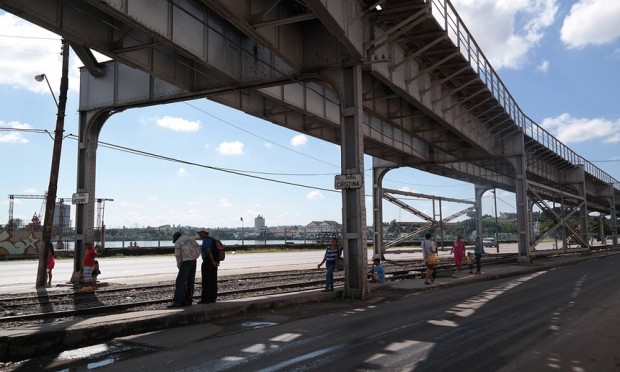
All eyes are focused on bay of Havana itself, once the source of the city’s immense wealth and now the place from which investors are hoping to extract an even bigger bounty. With the opening of a new $900m port 30 miles west of Havana at Mariel – built with Brazilian help – the old harbour now represents the next major development opportunity: a derelict jumble of warehouses and struggling fragments of industry.
“The harbour is the embryo of the city,” says José Antonio Choy Lopez, a Cuban architect who sits on the board of UNIAC, the Union of Cuban Writers and Artists: a body charged with assessing plans for the bay. As one of the best natural harbours in the Americas, enhanced by impressive fortifications in the 16th century, it was where the Spanish galleons assembled, laden with riches plundered from the New World, before sailing in protected convoys back to Europe. Huge quantities of gold and silver, along with Alpaca from the Andes, emeralds from Colombia and mahogany from Guatemala, were all traded here, bringing profits that are wrought in Havana’s palatial buildings. “It was a cultural crossroads, the very reason for the cosmopolitan character of the city,” says Choy. “And its redevelopment is now the most important project facing Cuba this century.”
For such an important project, precious little is actually known about the plans. Not that the sense of mystery is unusual. In Cuba, things are rarely announced until they actually happen. “They never publish targets here,” says one foreign diplomat, “because they usually don’t meet them.”
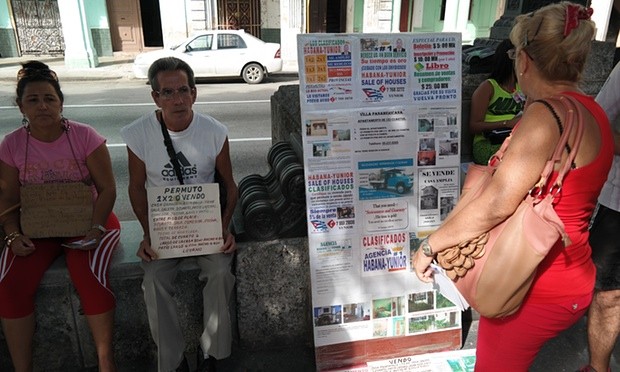
Choy talks of proposals to turn the harbour into a centre of “culture and recreation”: the redundant Tallapiedra power station might become an art gallery, along the lines of London’s Tate Modern, while the site of the Nico Lopez oil refinery across the bay, where a chimney still belches thick black smoke 24 hours a day, might be developed into a new city of science and technology. There is talk of transforming an elevated railway line into a linear park, like New York’s High Line, as well as plans for a big new transport hub next to the old train station.
Sensitively done, it could have a similar quality to harbour revitalisation projects such as San Francisco’s Fisherman’s Wharf or Cape Town’s V&A Waterfront; the elegant steel-framed warehouses repurposed with minimal intervention. One such shed has already been reborn as a crafts market, while another recently reopened as a restaurant and microbrewery.
However, the future of such enterprises, post-embargo, could be precarious given the complex history of land ownership here. One US shipping company has an $850,000 claim on a kilometre stretch of the waterfront, including the brewery building, which they say was seized from them after the revolution. The same goes for many such buildings across the city and beyond, with the value of claims for confiscated US property totalling almost $8bn, including long-standing claims from the likes of Exxon, Texaco and Coca-Cola. Despite diplomatic talks, compensation issues have yet to be resolved.
There is also no guarantee that the next stages of the harbour redevelopment will be as low-key as the warehouse renovations completed so far. Havana may well find itself catapulted from having too little money to having too much, too fast, with all the usual consequences. One insider describes some foreign developers’ proposals for the harbour as looking like “Las Vegas meets Miami in the Caribbean”.
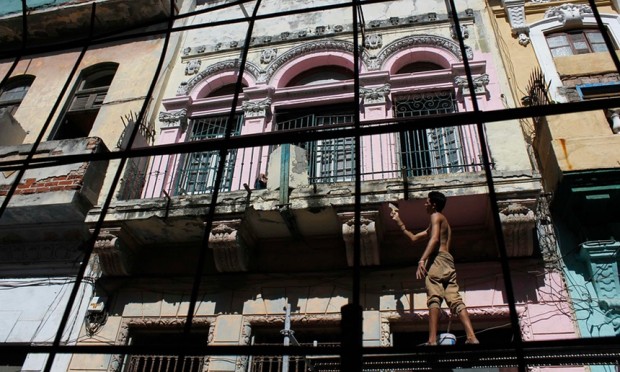
Freeman is more optimistic. Havana will be saved from the worst effects of commercial speculation, he thinks, by a combination of glacial Cuban bureaucracy and happy accident. “Nothing is going to happen very quickly, for the simple reason that it takes so long to get anything done,” he says. “Other countries have been trying to develop in Cuba for decades, and they’ve been stymied all along by the country’s sclerotic controls over every aspect of economic activity.” The harbour will also be protected from the “Venice syndrome” of vast cruise-ships dwarfing the city with their stacked cliff-faces of cabins, he says, because the boats simply won’t be able to get in. A road tunnel, laid across the bottom of the bay in a big concrete tube in the 1950s, makes it too shallow for them to enter.
At the other end of the scale from the grand waterfront plans, there are signs across the city of a new kind of real-estate development. Scaffolding has long shrouded much of Havana, but it no longer just signals the work of the City Historian. Recent changes to property laws, which have allowed Cubans to buy and sell their own homes for the first time in years, paired with a relaxation of US rules on how much money Cuban-Americans can send to their family back home, have spawned a micro-real estate industry of independent renovation. Families with access to cash from overseas are doing up crumbling buildings themselves and either letting them out as holiday rentals (possible through Airbnb since last year) or selling them on – minting a wealthy new class in the process.
It is a change in legislation that foreign companies have been quick to pounce on. Choy is currently putting the finishing touches to the renovation of a building on the waterfront that his family owns, converting it into holiday flats using funds from Cuba Real Tours – one of a growing number of companies developing boutique holiday lets. “We have invested a huge amount in this project,” says company director Patrick Fries, “but it’s incredibly risky as we don’t actually own the building.”
They have also encountered the chief difficulty of anyone trying to do construction work in Cuba: the dearth of materials. Glass still isn’t produced on the island, so each window has to be imported – and the customs limit of four windows per person, or two doors, mean these small-scale refurbishments often entail getting friends and family to help out.
But such obstacles certainly haven’t limited the aspirations of would-be developers, or the level of quality that they can achieve with a bit of Cuban resourcefulness. Freeman describes an “eye-popping” day he spent with one of Havana’s fledgling estate agents, touring spectacular 1950s houses that had been fixed up extraordinarily lavishly and are now being offered for up to $800,000.
Elsewhere there are penthouses listed for more than $2m, although no one knows how much anything is really worth: there are no benchmarks and no mortgage industry. Instead, people gather at the end of Paseo del Prado, standing with handwritten signs around their necks, displaying faded photos of apartments for sale, and browsing listings written in dog-eared exercise books. It is one of the many strange scenes in Havana of micro-capitalism at work – which clearly won’t be micro for much longer.
How to submit an Op-Ed: Libyan Express accepts opinion articles on a wide range of topics. Submissions may be sent to oped@libyanexpress.com. Please include ‘Op-Ed’ in the subject line.
- Libya’s HCS invites applicants for key state roles - December 31, 2023
- UK calls on Iran to prevent escalation in Israel-Hamas conflict - November 05, 2023
- Libyan Interior Minister: Immigrant shelter costs a fortune - November 05, 2023


